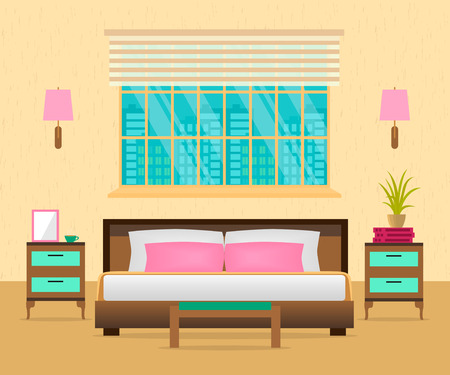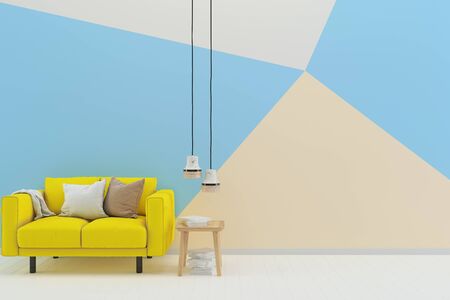1. Introduction: Setting the Canvas for Indian Homes
In every Indian home, walls are much more than boundaries; they are living canvases that echo personal stories, cultural heritage, and evolving lifestyles. From the vibrant hues of traditional rangoli-inspired motifs to the sleek minimalism of modern décor, wall aesthetics play a pivotal role in shaping the mood and identity of each room. As families seek to strike a balance between timeless charm and contemporary flair, the choice between wall paint and wallpaper becomes both an aesthetic and practical debate. This conversation is not just about colour or pattern—it’s about blending tradition with modernity, honouring the past while embracing innovation. Whether you’re renovating your ancestral bungalow in Chennai or designing a chic flat in Mumbai, understanding what works best for your space is key. Let us delve into the nuances of wall paint versus wallpaper, exploring which option truly brings out the soul of every Indian home.
2. Unveiling Wall Paint: Classic, Durable, and Vibrant
When it comes to Indian homes, wall paint has always been the traditional choice. Its timeless appeal, durability, and ability to withstand India’s diverse climates make it a popular option from metros like Mumbai to the humid coasts of Kerala and the arid deserts of Rajasthan.
Pros and Cons of Wall Paint in Indian Homes
| Advantages | Disadvantages |
|---|---|
|
|
Traditional Indian Preferences & Vastu-Approved Colours
The choice of colours in Indian homes is deeply influenced by culture and vastu shastra principles. Earthy tones such as terracotta, ochre yellow, peacock blue, and rich maroons evoke tradition and warmth. Meanwhile, vastu recommends light blues and greens for bedrooms (to promote calmness), and vibrant yellows or oranges in living spaces (to attract positive energy). Accent walls painted in auspicious colours are increasingly common in modern flats from Bengaluru to Delhi NCR.
Popular Colour Choices Across India
| Room Type | Vastu/Traditional Colours | Cultural Significance |
|---|---|---|
| Pooja Room/Mandir | Saffron, White, Gold | Purity & Spirituality |
| Living Room/Hall | Pista Green, Yellow, Cream | Welcoming & Uplifting Ambience |
| Master Bedroom | Pale Blue, Lavender, Light Green | Tranquillity & Restfulness |
| Kiddie’s Room | Bottle Green, Sky Blue, Pastel Pink/Yellow | Cherished Playfulness & Growth |
| Kitchen/Dining Area | Lemon Yellow, Orange, Off-White | Energising & Inviting Mealspace |
The Final Coat: How Paint Performs Across India’s Climates?
India’s climate diversity demands thoughtful paint selection. In coastal cities like Chennai or Goa where humidity is high, anti-fungal and waterproof emulsions are vital. In dry zones such as Gujarat or Rajasthan, UV-resistant exterior paints prevent fading. For monsoon-hit regions like Assam or Kolkata, damp-proof primers are essential before painting. This flexibility makes wall paint a truly versatile choice for every Indian home.

3. Walls with Character: Wallpaper’s Rise in Indian Decor
Wallpaper is quickly making its way into Indian homes, bringing an extra dash of personality and visual drama to our living spaces. Unlike the days when paint was the default choice, today’s homeowners are turning to wallpapers that echo both global chic and homegrown flavour. With patterns ranging from intricate Mughal motifs, paisleys, mandalas, to vibrant florals reminiscent of Bollywood sets, wallpaper now feels tailor-made for Indian sensibilities. This trend is more than just a fleeting craze—it reflects India’s love for colour, storytelling, and artistry on every wall.
The glamour of Bollywood has also played its part in this rising popularity. Wallpapers inspired by film set aesthetics—think lush golds, deep reds, and ornate textures—bring a touch of star-studded luxury right into your drawing room or bedroom. These designs are not only bold but also deeply rooted in cultural nostalgia, offering a slice of cinematic magic to everyday life.
For the modern Indian family, time is precious and convenience is king. Wallpapers have evolved to suit today’s fast-paced lifestyle: self-adhesive options and easy peel-and-stick technology mean you can transform your space over a weekend chai break. No messy buckets, no endless drying hours—just a swift makeover that fits seamlessly into your busy schedule. Whether you’re jazzing up a pooja room or giving your kid’s study corner a playful vibe, wallpaper lets you do it with minimal fuss and maximum style.
4. Room-wise Recommendations: From Drawing Room Elegance to Kitchen Practicality
Every Indian home is a tapestry of diverse spaces, each with its own mood, function, and personality. When choosing between wall paint and wallpaper, it’s essential to consider the specific needs of each room—ranging from the grandeur of your drawing room to the spiritual sanctity of your pooja room. Here’s a detailed guide tailored for Indian households, blending style, practicality, and cultural nuances:
| Room | Wall Paint | Wallpaper | Our Recommendation |
|---|---|---|---|
Living Room / Drawing Room |
|
|
Mumbai or Chennai? Go for washable paints for humidity. In cities like Delhi or Bangalore, combine neutral paint with a feature wallpaper wall for modern elegance. |
Bedroom |
|
|
If you want a peaceful retreat, pastel paints are timeless. For a luxurious feel, use wallpaper behind the headboard. |
Pooja Room |
|
|
Semi-gloss paints in auspicious hues like yellow or saffron are ideal. Wallpaper can work if kept away from direct flame or oil. |
Kitchen |
|
|
Opt for high-quality kitchen paints designed for Indian cooking environments. Avoid wallpapers due to steam and oil splatters. |
Kids’ Room / Study Space |
|
|
Use durable paint as base; add playful wallpaper panels that can be changed as kids grow. |
The heart of an Indian home lies in its adaptability and celebration of individuality. Mix-and-match approaches—like painted main walls with a bold wallpapered accent—offer both beauty and practicality. Ultimately, let each room reflect not just trends but also your family’s habits, traditions, and daily joys.
5. Budget & Maintenance: Indian Sensibility Meets Smart Choices
When it comes to Indian homes, budget and maintenance are key decision-makers, especially with our love for vibrant festivities, frequent cleaning, and battling humidity or dust. Let’s break down how wall paints and wallpapers stack up in these quintessentially Indian conditions.
Cost Factor: Upfront vs Long-Term
Wall paints generally win the initial round—they are cost-effective, readily available, and perfect for quick renovations before festivals like Diwali or Eid. Basic emulsion paints can fit most pockets, while premium textures do stretch the budget a bit. Wallpapers, on the other hand, demand a heavier upfront investment—not just in material but also in skilled labour for installation. However, if you’re dreaming of designer walls without recurring touch-ups, wallpapers may offset their higher initial cost over time.
Maintenance Matters: Keeping Up With Indian Rituals
Let’s face it—Indian homes witness regular poojas, oil lamp rituals, cooking curries with masala tadkas, and enthusiastic Holi celebrations. Painted walls are relatively easy to clean; a damp cloth or mild soap usually does the trick. But beware of stains—especially from turmeric or oil—which can be stubborn. In contrast, wallpaper requires more delicate handling; vinyl wallpapers fare better with gentle wiping, but paper-based ones might not survive splashes or scrubbing. This makes paint more forgiving amidst India’s bustling home life and robust cleaning habits.
Longevity: Weathering Humidity and Dust
India’s diverse climate throws everything from coastal humidity to dry heat and city pollution at our walls. Good quality paint—especially washable emulsions—can last five to seven years with proper care, though patchwork may be needed after monsoons or festival hangovers. Wallpapers promise an elegant look for up to ten years if you avoid moisture-prone areas like kitchens and bathrooms. In humid cities like Mumbai or Chennai, wallpaper seams may peel unless you invest in moisture-resistant varieties.
The Verdict: A Balancing Act
For spaces that need quick makeovers and tough love—think living rooms or kids’ bedrooms—paint stands out as the practical choice for Indian families. For those seeking style longevity in controlled environments—say a formal drawing room or master bedroom—wallpaper offers unmatched elegance. Ultimately, balancing your budget with your lifestyle and maintenance preferences will lead you to the right choice for every room in your Indian home.
6. Eco-Friendliness & Trends: Staying Responsible and Stylish
Today’s Indian homeowners—especially those in urban metros like Bengaluru, Mumbai, and Delhi—are becoming increasingly conscious about the environmental impact of their interior choices. When comparing wall paint versus wallpaper for Indian homes, the sustainability quotient is a key consideration.
Sustainable Choices: Paints vs Wallpapers
Eco-friendly wall paints are making waves in India, with many brands now offering low-VOC (Volatile Organic Compound) and odourless variants that are kinder to both health and the environment. These paints reduce indoor air pollution, which is a significant concern in our cities. Meanwhile, wallpapers have also evolved; options made from recycled paper or natural fibres like jute and bamboo are trending among environmentally-aware Indians. However, vinyl-based wallpapers still dominate the market due to their durability, though they are less eco-friendly than their natural counterparts.
Urban Preferences Shifting Towards Greener Alternatives
There’s a noticeable shift among young Indian families and millennial homebuyers who prefer sustainable materials. Many are opting for water-based paints or wallpapers with certifications for sustainability. The emphasis is not just on aesthetics but also on creating healthier living spaces—something that resonates with urban sensibilities and growing awareness around climate change.
Top Design Trends 2025: The Fusion of Responsibility & Style
The design forecast for 2025 in Indian homes is all about earthy palettes, botanical patterns, and textures inspired by local crafts. For paints, think soothing terracotta, sage greens, or deep indigo that echo our natural landscapes. Wallpapers are seeing a boom in hand-painted motifs, block prints reminiscent of Rajasthan, and geometric designs influenced by traditional Indian architecture. Ultimately, whether you choose wall paint or wallpaper, the trend is clear: Indian homeowners want spaces that reflect their style while treading lightly on the planet.
7. Expert Verdict: Painting Your Dream Indian Home
As we wrap up the vibrant conversation on wall paint vs wallpaper, let’s blend the insights with a dash of Indian sensibility. The best choice isn’t just about trends—it’s about what elevates your home and lifestyle. Wall paint shines in most Indian homes for its adaptability to our climate, ease of touch-ups, and cost-effectiveness—perfect for high-traffic areas like living rooms and corridors where kids run wild or festive gatherings are frequent. For those who crave tradition yet value practicality, neutral shades or earthy tones resonate with our roots while being easy to maintain.
Wallpaper, on the other hand, is your go-to when you want to make a statement. Choose it for accent walls in bedrooms, pooja rooms, or study corners—spaces that reflect personal style and can be shielded from heavy wear and tear. Modern Indian families love wallpapers with ethnic motifs or contemporary patterns that echo our evolving aspirations.
If you’re feeling adventurous, why not mix both? Paint the majority of your walls for durability and use wallpaper as a highlight—think floral prints in the dining area or geometric designs behind the headboard. This creative fusion balances practicality with panache, mirroring the dynamic spirit of Indian homes.
Ultimately, listen to your lifestyle: if you need fuss-free upkeep and timeless charm, paint wins. If you seek personality and boldness, wallpaper takes the spotlight. And if you dream big, don’t hesitate to blend both for a home that tells your unique story—the true Indian way.

